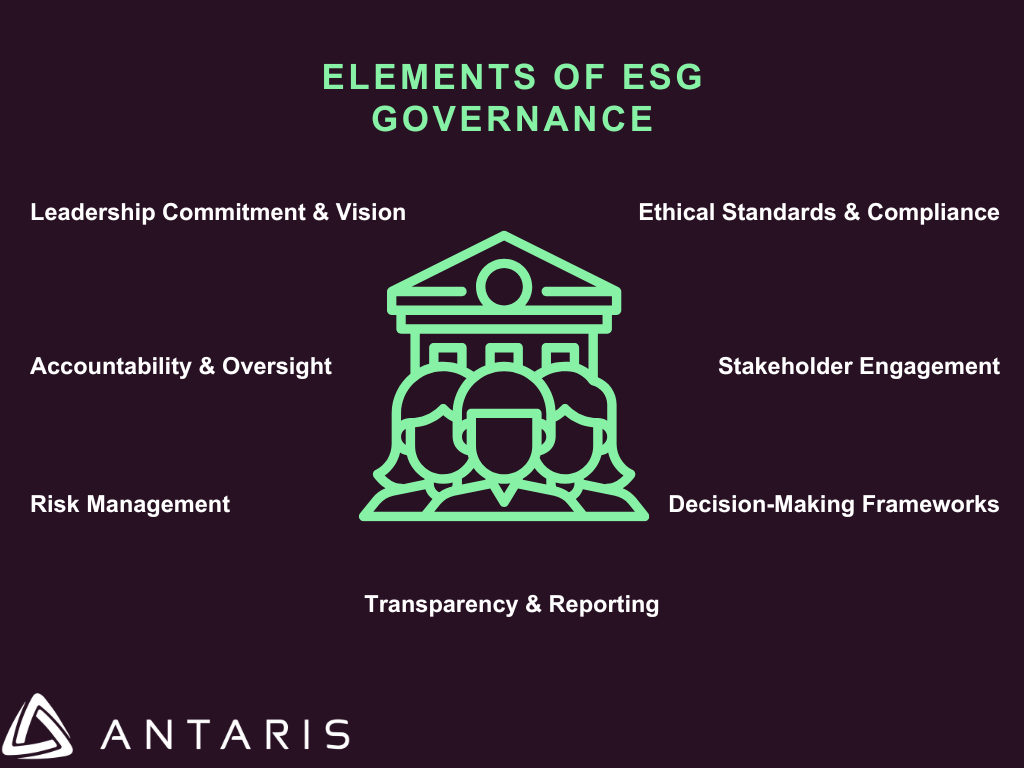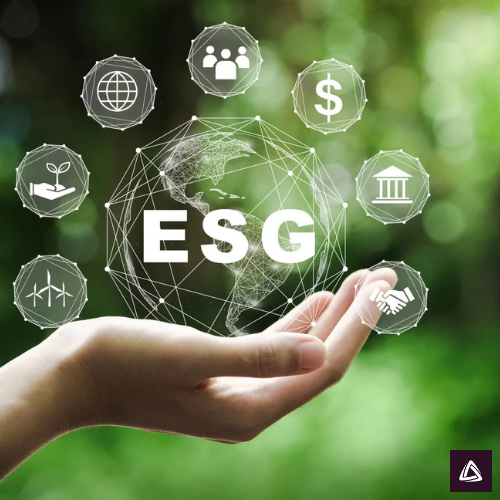ESG Governance: 7 Critical Ways Governance Impacts Your Sustainability Strategy
ESG Governance is a crucial pillar of a company’s sustainability strategy as it shapes the way an organisation makes decisions, manages risks, and ensures accountability in pursuing sustainable practices.
Here are seven critical ways ESG governance impacts sustainability:
- Leadership Commitment and Vision
Effective ESG governance involves establishing a clear commitment to sustainability at the highest levels of leadership. This starts with the Board of Directors and senior executives who set the company’s vision, mission, and strategic priorities around sustainability. Leadership buy-in is essential to allocate resources, establish goals, and embed sustainability into the company’s long-term strategy. - Accountability and Oversight
Good governance practices ensure that sustainability goals are regularly reviewed, monitored, and reported. Establishing dedicated committees or board-level positions responsible for sustainability matters is critical. Accountability systems enable performance tracking against set targets and ensure adherence to regulatory standards and ethical guidelines. - Risk Management
Governance frameworks help identify and mitigate sustainability-related risks, such as climate change, regulatory risks, supply chain disruptions, or social issues. This proactive approach minimises potential negative impacts on the company and its stakeholders, improving resilience and long-term sustainability. - Ethical Standards and Compliance
Governance plays a role in defining the company’s ethical standards, corporate policies, and compliance requirements. By implementing robust ESG governance mechanisms, companies can enforce responsible business practices, ethical behaviour, and adherence to human rights, labour standards, and environmental laws. - Stakeholder Engagement
A key aspect of governance is to engage with stakeholders, including investors, employees, customers, and communities. Transparent communication and consistent dialogue help align the company’s sustainability efforts with stakeholder expectations and enhance trust. - Decision-Making Frameworks
ESG Governance structures help in establishing formal frameworks for making strategic decisions that align business operations with sustainability objectives. These frameworks guide company leaders in balancing financial, environmental, and social considerations. - Transparency and Reporting
Effective governance emphasises transparent reporting on sustainability performance. Regular disclosure of ESG metrics, progress reports, and sustainability initiatives builds stakeholder confidence and reflects a commitment to accountability.
In essence, ESG governance provides the backbone for integrating sustainability into business operations, driving a company’s strategic direction, and ensuring the responsible management of resources, risks, and relationships. It is about building a strong foundation of leadership, accountability, and ethical practices that align with the company’s sustainability goals.

International Businesses with Positive ESG Governance
Patagonia: Mission-Driven Governance
Governance Structure: Patagonia’s governance focuses on its mission of environmental activism. The company is structured as a certified B Corporation, and it has implemented a strong mission-based governance model that guides every decision-making process.
Patagonia’s leadership has consistently demonstrated commitment by donating 1% of its sales to environmental causes (1% for the Planet), embedding environmental accountability into corporate governance. Additionally, they have transitioned their ownership model to a trust that commits profits to fight climate change.
Danone: Purpose-Driven Company and Dual Project Governance
Danone has adopted a dual governance project, integrating financial and non-financial objectives into its core strategy. Danone also became an “Entreprise à Mission” (Purpose-Driven Company) in France, where its purpose is embedded in its legal status.
Danone’s governance model focuses on balancing profit with purpose. The company has a robust stakeholder engagement process and regularly publishes its sustainability commitments, aligning them with global frameworks such as the UN Sustainable Development Goals (SDGs).
IKEA: People and Planet Positive Strategy
IKEA’s sustainability strategy is driven by a sustainability steering group that includes senior leaders from across the organisation. This group reports directly to the company’s executive management and board.
IKEA’s governance emphasises ethical sourcing, renewable energy investments, and circular business models. IKEA has implemented due diligence processes to monitor human rights and environmental risks throughout its supply chain.
These examples showcase how leading organisations use effective ESG governance to drive accountability, transparency, stakeholder engagement, and sustainable decision-making, thus ensuring that their sustainability strategies are resilient, impactful, and aligned with long-term goals.
Antaris provides a range of sustainability and climate services to help businesses implement sustainable practices and reduce their environmental impact.
To know more click on the link: https://antarisconsulting.com/service/sustainability-and-climate/








